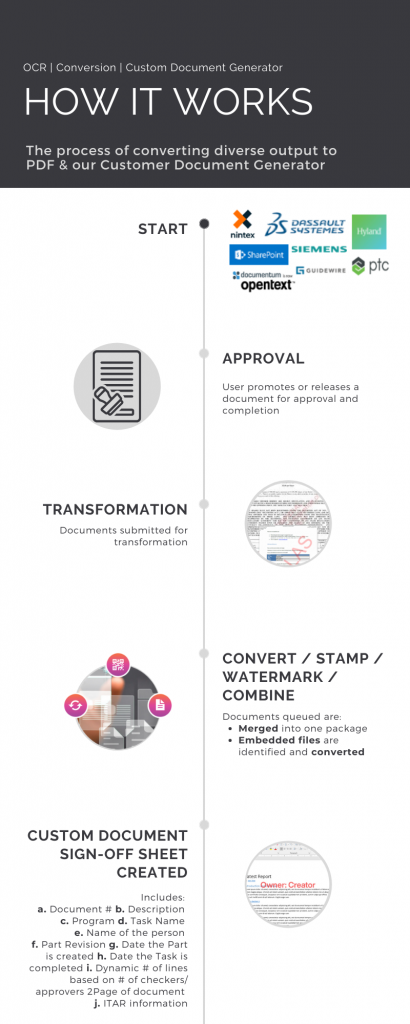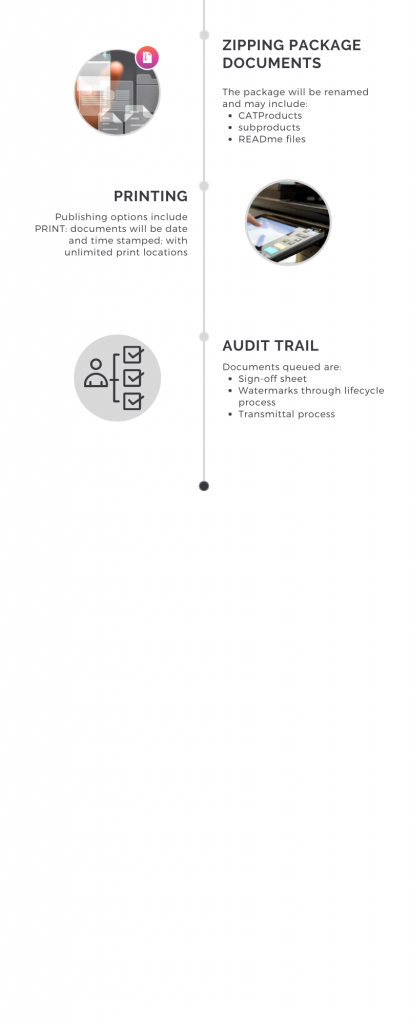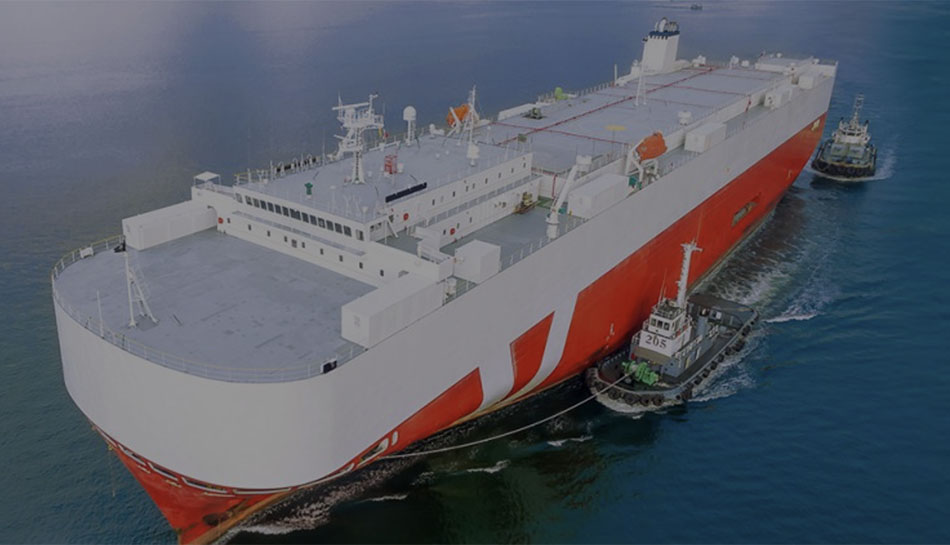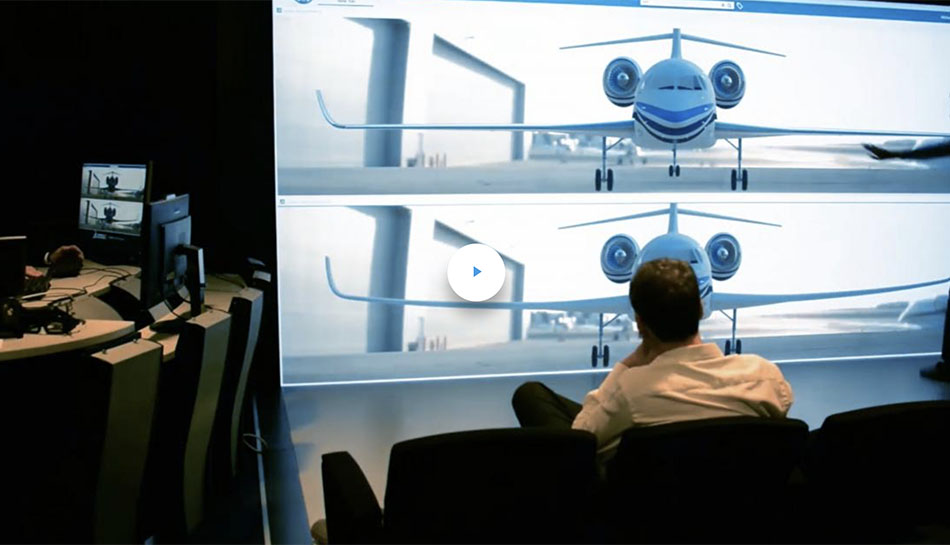Posts by Emily
Customer Use Case: Aerospace and Defense
OCR / CONVERSION / STAMPING / CUSTOM DOCUMENT GENERATOR
CUTSOMER USE CASE


Download Qore8 Solution DataSheets
Learn how Qore8 solutions can layer with your existing systems to transform your business processes.

THE SMART, SECURE CORE OF
DIGITAL TRANSFORMATION

© 2020 Qore8
Created by Emily Sewell Privacy Policy Terms of Use Cookies
Focus on Action Instead of Procrastination. How David Allen’s Self-Help Book, Getting Things Done, Helps Business Processes.
About twenty years ago, way back in 2001, David Allen published the emblematic Getting Things Done and changed how lots of people organized their professional and personal lives.
In the long lineage of self-help books, David Allen’s was unique in that it was not about manipulating others (see Dale Carnegie’s How To Win Friends and Influence People from 1936) and didn’t have pseudo-religious undertones (see Stephen Covey’s Seven Habits of Successful People from 1989), but was just a simple, practical method for self-improvement by focusing on action rather than procrastination. The fundamental thesis was that we never take the time to prioritize our multiple to-do lists and with overflowing inboxes, we spend our lives stressed out and feeling behind in everything. The method did require at least “a weekend” as he claimed to lay out all of one’s tasks and priorities and categorize and organize them once and for all. It was hugely successful and spawned successful websites such as the legendary 43folders.com website and merlinmann.com podcasts by Merlin Mann and the ongoing LifeHacker.com by Gina Trapani, and continues to help people two decades later.
As mentioned above, one of the key requirements to Getting Things Done is the housekeeping that is required to get your Inbox down to zero and your to-dos down to one prioritized list. This applies at a corporate-level as well. In the new normal after COVID-19, companies will only survive if they
accelerate their drive to digitalization. While external business is slow, this gives a unique opportunity to refine and improve internal processes.
The shift towards digital means that paper records need to be moved into the digital realm because physical access to file folders and archives will be more and more restricted over time, and because we will begin collaborate more exclusively over the internet. Virtual collaboration and remote working are clearly going to be some of the deeper structural changes to the professional world, and tools like Qore8 can be fundamentally useful in this transition—and the lull in business is the perfect time to get started.
With Qore8, you can scan your documents and digitalize all the data via the powerful optical character recognition (OCR) built into their documentation transformation platform. Rather than print out specifications or drawings which then risk being lost or pirated, with Qore8, you can stamp all of your documents and designs so that they are traceable everywhere whether in digital or physical form; this includes of course during the internal approvals processes and transmittal to sub-contractors in the supply chain. It then becomes a foundation for protecting the Virtual Office.
Just as David Allen’s technique reduces stress drastically by giving people control over their tasks and priorities, Qore8 can provide a level of peace of mind that's missing in your business by ensuring that all document-related processes are traceable, digital, and archived for later. Contact us to find out how our private and confidential document transformation platform can help you work with less stress and more efficiency.
Ready to find out how you can increase productivity?
Learn how Qore8 solutions can layer with your existing systems to transform your business processes.

THE SMART, SECURE CORE OF
DIGITAL TRANSFORMATION

© 2020 Qore8
Created by Emily Sewell Privacy Policy Terms of Use Cookies
Pandemics and the Potential for Digital Transformation. How Can Qore8 Help?
In 1348, the bubonic plague, or Black Death, jumped from Sicily to the Italian mainland and created an unprecedented wave of death and destruction that lasted until 1353 (and beyond with recurrences as late as the 1800s!) Besides the terrifying toll in human lives (nearly 50% of the
population of Europe at the time and even some cities completely disappearing), society as a whole was deeply transformed. The current COVID-19 crisis has, fortunately, thanks to modern medicine and preventative measures, not been even a fraction as deadly. However, the economic transformations risk being nearly as deep as those following the crisis nearly 700 years ago.
Before 1348, Siena was one of the largest, most prosperous cities in Italy with about 120,000 inhabitants, the same as their rival Florence. By 1400, Siena had been reduced to about 25,000 inhabitants due to the plague and its aftereffects. Siena’s population never again reached the pre-plague numbers, today she has around 50,000 inhabitants. However, as the Renaissance started in Florence at the dawn of the fifteenth century, a different but longer-lasting revolution was underway in Siena: the invention of modern banking. In hard-hit Siena, several businessmen decided that rather than just sitting on benches (“banco” or “banks”) at the marketplace changing and selling currencies, they could actually hold people’s money for them and issue letters of credit which made transportation much less perilous and the management of money more plague-resistant. The Banca
Monte Dei Paschi di Siena (Bank of the Mount of Piety of Siena) is the world’s oldest bank founded in 1472 by the powerful Piccolomini family. Many other Sienese nobles followed suit and this in turn made Siena one of the richest cities in Tuscany.
As we recover from COVID, we will find that social distancing will become part of the fabric of our daily lives. We will all need to learn how to work remotely, to sell without actually holding an in-person sales meeting, to take training online, in a word, to work autonomously. Cloud technology will be central to this transformation in transforming manual processes into digital ones.
The digital transformation journey will vary from organization to organization. The longer, more tedious journey will belong to organizations that move from a manual operational state to a digital operational state transforming past, current, and future processes towards automation in its purest form. This will be particularly challenging for paper documentation as organizations move to reorganize their past to a relevant future where team members can truly work autonomously, and information can be garnered virtually rather than physically.
One company with an innovative solution to document and content transformation is Qore8. Transforming paper to digital information in secure cloud storage and adding OCR to create searchable content is just the tip of the iceberg in terms of the solutions they provide. If the document needs to be archived at the end of its lifecycle, this is another built-in feature of the
solution.
Organizations with a shorter journey may need to automate their external collaboration processes. Qore8 provides a modern solution for users to collaborate with external stakeholders through the lens of their business platform. For example, Qore8, a partner of Dassault Systèmes’ 3DEXPERIENCE platform, works with organizations to reduce siloed information, organizing and maintaining content within their core platform.
We also have world-class technology for automating the digital transmittal process for getting heterogenous packages of documents, models, and specifications from OEMs to suppliers and back. Our team has over 20 years of experience and a world-renowned reputation for extraordinary customer service.
Just like Siena bounced back economically and transformed how we view and manage money, the manufacturing industry will also bounce back and transform how we work. Solutions like QueLogic or ConvertLogic are essential to aiding this critical transition towards fully implementing the digital thread.
The only way to speed up is to keep up.
Are your processes keeping up with the digital age?
Learn how Qore8 solutions will empower digital transformation at your organization.

THE SMART, SECURE CORE OF
DIGITAL TRANSFORMATION

© 2020 Qore8
Created by Emily Sewell Privacy Policy Terms of Use Cookies
Protection Through Signatures
It may seem a bit strange, but the idea of owning a piece of data is a relatively new concept. Before the invention of the printing press in the 15th and 16th centuries, the only real “owner” of any piece of data (a scroll or book or whatever) was the person holding the physical document. When the printing press allowed for the wide dissemination of books, anyone could print anything and sell it. None of Shakespeare’s plays were published by himself and the copies we have today are hobbled together from the folios and quartos which only started to appear forty years after the playwright’s death. In 1662, the English Parliament tried to protect the author’s rights (in a veiled censorship mood to be honest) and this example was followed by the West resulting in today’s rather complex web of protections for documents and now data.
A major concern for companies deploying PLM systems is the security of their intellectual property throughout the product design and manufacturing processes. Now that data is primarily inside networks and computers, it gets even more complex to determine the real owner of a particular document or idea. Qore8 provides both electronic and digital signatures and a related infrastructure designed to protect PLM IP as it moves through the supply chain always guaranteeing original ownership.
Sometimes things can get confusing during various processes though. To take an example from the jazz world, the amazing pianist and composer Thelonious Sphere Monk wrote the jazz class “‘Round Midnight” (also sometimes written as “‘Round About Midnight”) and asked his friend Cootie Williams to get it copyrighted for him (Monk was not big on paperwork!) Unfortunately for Monk, Cootie added his name as well as Bernie Hanighen’s to the copyright (Hanighen wrote lyrics for it, unrequested and unwanted by Monk and more or less completely forgotten now), and so, despite having written the song by himself, he had to split royalties with two other guys who truly added no creative spark to his work particularly after Miles Davis made a massive hit out of it on his eponymous album in 1957.
In order to secure transfers in PLM, Qore8 has a robust approval system using digital signatures with the customer’s personal certificates to validate all approvals during the life of any object. This way, no one can steal credit (or pass the blame) because there is a secure trace of all approvals.
Ready to secure your processes?
Learn how Qore8 solutions help you secure processes through digital or electronic signatures.

THE SMART, SECURE CORE OF
DIGITAL TRANSFORMATION

© 2020 Qore8
Created by Emily Sewell Privacy Policy Terms of Use Cookies
Masterpiece in Motion: How to better manage complexity in shipbuilding
Growing demands, growing complexity
Ship owners across industry segments have one thing in common – the need for more advanced ships. Naval contractors are looking for smaller, more sophisticated vessels. Commercial cargo ship owners, on the other hand, want to go bigger for increased capacity. Offshore drilling companies require highly specialized vessels, while cruise ship and yacht owners are asking for high-tech vessels and a memorable passenger’s experience.
Ships are among the most complicated machines to build, and the demand for increasingly sophisticated vessels has added layers of complexity to the shipbuilding process. As it is, shipbuilders’ operations are already highly complex. Shipbuilders face pricing concerns from ship owners as they look to reduce their total cost of ownership due to regulatory and economic factors. Most contracts – even government ones – now come with fixed budgets and delivery dates.
That’s not all. Building ships requires a coordinated effort with globally distributed suppliers. The industry itself is a diverse and complex ecosystem of interconnected owners, shipyards, suppliers, classification agencies and regulatory bodies. This equates to a large amount of people who need to exchange information and work together throughout a vessel’s lifecycle.
In the face of all these challenges, shipbuilders are aware of the need to increase efficiency in their operations. However, they are often constrained by manual processes. Until today, many shipyards still get by with the help of Excel spreadsheets as well as lists and 2D drawings. In the past, this approach may have been acceptable, but today’s environment is less forgiving.
So how can shipbuilders move forward?
A better approach to shipbuilding
Ship owners expect reliable, high-quality vessels that fulfill all of their requirements. In order to confidently deliver these vessels, shipbuilders need to make the right decisions and be efficient at every step.
During the design phase of shipbuilding, finding the optimal combination requires the ability to test design options while efficiently managing the associated complexity and risk. Shipbuilders should be able to engineer complex systems efficiently as well as test and validate design options as early as possible in the product lifecycle.
It’s especially important to get things right while designing to avoid costly rectifications downstream. So how can shipbuilders achieve ship design excellence? It’s all about having the right capabilities to support this goal.
Shipbuilders gain a crucial advantage when they establish continuity in shipbuilding from design to manufacturing. They will then be able to handle design iterations with efficiency – if a change arises, they can quickly understand the impact of the change and efficiently propagate it to manufacturing.
The manufacturing stage is where the majority of costs is incurred. These costs come from material, logistics, shipyard facilities, production equipment and labor. Resolving issues earlier during production planning stage will bring costs down significantly. Shipbuilders should therefore identify and address potential manufacturing problems at this stage.
As such, the production planning needs to be done early – during contract definition. Apart from ensuring manufacturability, shipbuilders are able to estimate workload and verify the shipyard’s capacity for timely deliveries. Better work preparation also enables shipbuilders to improve the pre-assembly and pre-outfitting processes. This, in turn, reduces the time needed for actual assembly operations.
What it takes to craft a masterpiece
The goals are clear. The solution is just as clear: a full business transformation, supported by the right technology.
An integrated digital business platform sets the stage for confident crafting of masterpieces, and our industry experts at Dassault Systèmes know this well.
Ready for more? Gain access to more insights from François and our other marine and offshore experts in our latest eBook, To Craft a Masterpiece. The experts reveal how the modern shipbuilder can manage complexity at every stage of the operations with the help of the 3DEXPERIENCE® platform.
Ready to see how Qore8's Business & Compliance tools will help you simplify complex processes?
Learn how Qore8 solutions can layer with your existing systems to transform your business processes.

THE SMART, SECURE CORE OF
DIGITAL TRANSFORMATION

© 2020 Qore8
Created by Emily Sewell Privacy Policy Terms of Use Cookies
What Is the No Compromise Era?
| Apr 30, 2019 |
The pressure is on and it’s coming from every angle. The Aerospace & Defense industry faces growth in space, a huge backlog of commercial orders and increased spending in defense. Original Equipment Manufacturers and large suppliers demand greater efficiency from their suppliers. New competition in the form of manufacturers in emerging BRIC (Brazil, Russia, India and China) economies—made more agile by the latest technological innovations—wait hungrily in the wings, ready to replace those who fail to deliver.
In short, to thrive the industry must deliver more advanced aircraft, defense systems and space vehicles, in less time and at lower cost than ever before.
And yet, according to the paper, ‘Improve program execution with integrated simulation’ by Lifecycle Insights, a Product Lifecycle Management (PLM) analyst study states that only 18% of all Aerospace & Defense programs and projects are delivered on time without disruptive shifts in resources. The study shows that increased failures during prototype testing result in a decreased likelihood of launching programs on time. The conclusion: better insight into product and systems performance is “desperately needed earlier in the program cycle”.
So, how do companies improve program execution and first-time quality without compromising on quality and requirements? The answer is found in an enterprise digital ‘makeover’ that unites the many specialized disciplines needed to convert an idea into a 3D model. This model can be simulated, tested, refined and experienced, all in a virtual environment. Having a digital makeover provides the potential to balance all three critical legs of the quality, cost and time ‘stool’.
Applying simulation throughout the lifecycle
The Lifecycle Insights paper proposes an optimal combination: “The right mix of specialist and integrated simulation technologies can make a powerful difference… In concept design, these tools help define feasible bounds of performance. In contract bidding, they enable better-informed teams to bid more accurately, thus protecting profits. In detailed design, they provide engineers guidance on daily decisions, so that designs are more likely to pass prototyping and testing the first time. Even in prototyping and testing, simulation allows teams to understand secondary and tertiary failure modes… Simulation Intelligence systems provide insight across all types of analysis results plotted against different item configurations. Simulation data management tracks it all, managing files and configurations.”
This holistic approach to simulation—recognizing its huge value in verification and validation—and applying it throughout the entire lifecycle of the program, is where forward-thinking companies are heading.
Harnessing the power of collaboration
Simulation isn’t the only digital application offering major potential for an enterprise digital makeover. Platform-driven digital collaboration applications make it possible for teams across an enterprise or their extended enterprise to optimize designs and streamline processes while keeping a firm eye on costs.
Witness the success story of the Airbus A350 XWB program. Airbus programs suffered from duplication and lack of visibility because each location maintained its own digital mock-up and worked separately. This lack of communication extended design time and introduced errors that drove up costs.
Once Airbus put its development platforms under the single Dassault Systèmes ENOVIA application, its employees and extended enterprise accessed all relevant data and information in real-time, thereby reducing engineering change orders and keeping the A350 XWB program on course.
In addition to ENOVIA®, Airbus uses a range of Dassault Systèmes’ apps for design, simulation and manufacturing on the 3DEXPERIENCE® platform. The platform became the core enabler for the A350 XWB program credited by the company for meeting the maiden flight date.
“We had many challenges including a very aggressive development schedule and the need to ramp up production quickly to satisfy our delivery commitments,” explained Didier Evrard, Executive VP and Head of the A350 XWB Program.
“With 3DEXPERIENCE ®, our design quality and efficiency have considerably improved… We used CATIA to design the aircraft’s structure, the installation systems, the tubing, the composites parts, and the electrical systems completely in 3D,” added Evrard.
“With SIMULIA, we transitioned from an approximate, linear analysis approach to a more accurate, non-linear analysis, which gives us a deeper understanding of how the structure really performs in a given situation.”
“Making the A350 XWB possible presented tremendous technical, technological and organizational challenges due to the complexity of the program and the number of outsourced stakeholders. But with Dassault Systèmes’ solutions, we introduced harmony in our processes, methods and tools, and saved precious time that we spent, instead, on innovation.
Integrated system boosts performance
What do you do when your systems don’t work together? MBDA, a world leader in complex missile systems, had to confront issues caused by having stand-alone Enterprise Resource Planning (ERP), Manufacturing Execution System (MES) and PLM. This was no longer practical to support, nor was it compliant with current operating systems. Even worse, some MBDA sites were still using paper-based tracking systems.
An integrated solution was seen as the way forward: “Once we reviewed and understood Apriso’s FlexNet, it became clear that we could realize significant performance improvements and cost savings by integrating our enterprise planning, engineering and manufacturing operations systems,” said Jérémie Ropero, Project Manager. “Apriso’s solution handles the diverse products and types of controls we required while providing a strong foundation for tracking and tracing production and process changes.”
MBDA now has “superior reactivity between process design and the shop floor, making us more nimble,” according to Ropero. “This allows us to be more responsive to technical innovations, essential in such a fast-changing industry as ours.”
The company’s production and quality operations are fully traceable, while operators are more versatile. The routing definition procedure has been harmonized across departments (routing maintenance time has been reduced by 50%) and new information systems are linked with existing apps.
The company’s production and quality operations are fully traceable, while operators are more versatile. The routing definition procedure has been harmonized across departments (routing maintenance time has been reduced by 50%) and new information systems are linked with existing apps.
Searching for efficient analytics
If you want to accelerate your product to market, then you’ve got to speed up processes and reduce duplication. That’s what US-based Bird Technologies had in mind when it adopted Dassault Systèmes’ EXALEAD OnePart application to turbocharge their engineers’ search for similar parts and to reduce the number of duplicate parts in the database.
“Customers value the reliability of our products but also want good quality for less money,” explained John Winter, Mechanical Engineering Manager at Bird. “Our large product portfolio has resulted in a lot of 3D models that, if they could be reused in new designs, would considerably cut costs and market delivery time. Yet, the file locator tool we were using in the past was a non-indexed search tool that was slow and inefficient. Rather than wasting time waiting for the tool to crawl through all our data, our designers preferred redesigning components from scratch.”
Opting to redesign components also left Bird with a large database of duplicate parts on its server. “We had over 3,000 duplicate parts and needed a way to reduce this number,” Winter said. “Reusing existing designs was the answer.”
EXALEAD’s OnePart searches through the design database based on file attributes, metadata and geometric similarities, so Bird’s engineers can quickly find similar parts.
“We’ve realized a 75% reduction in duplicate parts and expect this to improve as more of our engineers get acquainted with this application,” enthused Winter. “Before, our engineers and especially new hires would ask one of their more experienced colleagues where they could find a certain part. Now my designers don’t need to depend on anyone; they use OnePart to search for the part themselves.”
Bird’s engineers also use OnePart for 3D CAD documents and for all other design documents, such as data sheets, test data, manufacturing instructions, test procedures and drawings. In fact, all their search processes have been completely transformed for the better. “Information search has been reduced from an average of four minutes per search to just a few seconds,” Winter added.
Understanding the value of digital transformation
Successful digital transformation goes hand in hand with a transformation of the way your organization works. Businesses should be prepared to break down traditional silos to embrace new ways of working seamlessly across functions, departments, languages and geographies. ‘Rework’ should become a thing of the past.
The PwC article, ‘2017 Commercial Aviation Trends’ by Jonathan Kletzel and Bryan Terry, points out that “a sense of urgency is required” for companies to move to a digital organization to cope with significant increases in passenger traffic. Nonethless, the authors accept that “moving beyond buzzwords like AI and IoT to actual applications can be difficult.” Rather than getting bogged down in the “shiny object” aspect of technology trends, Kletzel and Terry urge the industry to “think more practically: specifically, think in business terms about what digital technologies enable; what opportunities they offer to grow the top line and reduce operating costs simultaneously.”
For example, airlines need to use digitalization to “enhance and optimize operations—to reduce costs while improving service. They need to put technology to work in predicting and preventing equipment failures, in optimizing processes and productivity on the ground, and in providing better and timelier information to employees.”
The authors argue that those at the top of the management tree need to view digitalization in the right light. Instead of using it as a “panacea” or virtual band-aid, digitalization should serve as “a tool for tactical innovation”.
“Your business strategy—the company’s short- and long-term goals—will point the way to the customers you want to win, the offerings you hope to provide that attract these customers, and the right channels for reaching them. When those objectives are known, you can identify the technologies that best support them.”
Meeting—and exceeding—expectations
By embracing the digital transformation of your product lifecycle—concept, development through manufacturing, Aerospace & Defense manufacturers and suppliers can confidently build increasingly complex aircraft to meet passenger demand, operator cost and uptime targets.
Now it’s possible to work concurrently in the context of a full system digital mock-up which provides a single version of the truth. With this collaboration—everyone working together from different locations in real-time—you can deliver dramatic new efficiencies in design, validation, manufacturing, testing, certification and the ongoing support of new aircraft. And, program managers can continuously monitor schedules, budgets, resource allocation and deliverables across the supply chain.
This is the course to true operational excellence—accelerating complex program development, increasing productivity, optimizing component and system design via process automation, and maintaining total control of programs. You can ensure you meet contract deadlines, lower costs even further and, most important of all, that your customers always receive the quality they expect.
Download Qore8 Solution DataSheets
Learn how Qore8 solutions can layer with your existing systems to transform your business processes.

THE SMART, SECURE CORE OF
DIGITAL TRANSFORMATION

© 2020 Qore8
Created by Emily Sewell Privacy Policy Terms of Use Cookies
Revealed: The formula of competitive advantage
Getting more competitive
The Energy, Processes and Utilities industry is not just getting more complex and costly, it’s getting more competitive too. The profitably of established businesses is being challenged by accelerating commoditization eroding their legacy of competitive advantage.
These days, if you can’t compete on price as well as quality and expertise, you’re out of the running. Which means that companies involved in, for example, product development and specialty chemicals are being challenged by a highly competitive a market that never stops investing in science and new technology.
This competitive pressure is being felt right across the industry. Companies hungry to win new projects face expanding costs from a specialized workforce that’s shrinking as many hit retirement age, plus the need to operate more complicated processes and create more involved designs.
The multi-tasking owner-operators of complex facilities are also feeling the pressure. They need to handle the proper maintenance of their assets, invest for long term operations, manage procurement strategies and deliver ROIs set by over-optimistic boards in an environment where the challenges and expectations are always changing.
Faced with these mounting, multifaceted challenges, how is it possible to ramp up competitive advantage?
The necessity of innovation
To increase margin and profit organizations have got to – in the simplest terms – ‘do more better and for less’. In reality, that means increasing quality and productivity while reducing non-value adding activities and compliance risk.
The answer is ‘innovation’. Innovation isn’t only about having ‘the big idea’ and creating brand new product lines, revenue streams and markets. It’s about taking existing processes and making them simpler, quicker and more efficient. That means reducing time spent on repetitive tasks, avoiding duplication by improving organizational and infrastructure processes, and speeding up R&D to quicken the pace of innovation and diversify into new ventures.
Implementing Dassault Systèmes’ capabilities within your organization offer you many benefits:
- Virtual testing can reduce the number of experiments by 40%.
- Integration and automation reduces time spent on documentation by 44%,
- Time spent on tracking samples is decreased by 90%.
The result? A 66% acceleration in R&D.
Working together on one platform
Innovation is also about improving the way individuals work together. By making sure relevant real-time information is available to all project stakeholders – from the remotest field engineer to the director of manufacturing at head office. That way everyone can collaborate both vertically across the boundaries of functions, departments, organizations and geography, as well as horizontally, weaving a digital thread throughout the lifecycle of their projects, from fundamental research to industrialization. Then they can freely – yet securely – capitalize on knowledge and know-how by sharing and building on their ideas and expertise, bringing together data from different sources in intelligent ways to reveal yet undreamt of formulas, designs and methodologies.
To achieve all the above, an organization needs to establish a scalable business platform connecting people across disciplines, processes and related organizations, such as suppliers. A platform that connects the virtual and real worlds, allowing a global business to re-imagine its engineering and operations while planning for excellence.
Simulating success creates real success
In the virtual world we can develop, simulate and test everything to the limit – exploring the real-world behaviour of products and nature itself. Here we can afford to make mistakes before they become a reality. This applies to simulations at all scales from a molecular level for materials to a systems level for entire buildings. This saves time, money and materials – helping to create economically sustainable companies with less wasteful, more environmentally sustainable, processes.
Better still, we can make collaboration not just possible, but extremely sophisticated – like testing a dam’s ability to resist an earthquake. We can also make the difficult easy, simulating complex and novel plant processes before they are put in place. And we can make the dangerous safe, such as seeing how a volatile chemical will react in multiple scenarios.
The ASE Group attributes to the Dassault Systèmes’ solutions the following facts:
- It reduces the time it takes to construct a nuclear unit from 58 to 48months.
- It has also reduced engineering and operator hours by 25% during commissioning.
- It saved $5-10M per reactor in data collection and transfer during handover.
- Reduced accidents by 50% – thanks to the sharing of higher quality, less ambiguous information between fieldworkers.
Beating the challenges to profitability
Visibility is key to profitable innovation. Everybody is sharing the same information, everybody can see what is – and what isn’t – going well and everybody can also see how change those things for the better. Because, in the end, it’s all about how we work together as teams.
Which is why improving innovation and operational efficiency requires consideration of the human as well as the technological. Management must leverage their human capital because innovation inevitably requires shifts in corporate culture. It requires agility, faster decision-making and project cycles.
Becoming a digitalized organization impacts the type of work that teams do and how they work together. There will be pressure to achieve results more quickly. New skills and knowledge will be required. And a new mindset. For innovation to succeed everyone in the organization needs to adopt an ‘owner mindset’. To take responsibility and think like the customer.
That way we can ensure that everyone within the business embraces the principles, platforms, supportive apps and technologies that deliver digital continuity in everything we do. That’s how we’ll get an edge on the competition. That’s how we’ll win.
Ready to see how Qore8's Business & Compliance tools will help you simplify complex processes?
Learn how Qore8 solutions can layer with your existing systems to transform your business processes.

THE SMART, SECURE CORE OF
DIGITAL TRANSFORMATION

© 2020 Qore8
Created by Emily Sewell Privacy Policy Terms of Use Cookies
Harness Powers of Agility in Production
The Aerospace & Defense industry performs an exceedingly delicate balancing act between production and demand. Excess capacity lowers margins while insufficient capacity can cost millions in lost revenue.
As a result, manufacturers focus on dynamically matching their production rates with market pressures – simultaneously striving to improve first time quality, lower costs and ensure on-time delivery.
Companies have a high incentive to solve these challenges. The reported eight-year backlog in meeting commercial aviation ordersmay well double in the next 20 years. Add to that the significant ramp-up of defense spending, not to mention the commercialization of space, and you’ve got a big industry with a big problem. How should Aerospace and Defense companies capitalize on this unprecedented wave of demand?
Join the power of the digital revolution
Leading companies recognize the power of technology to fundamentally change the way they do business and meet today’s challenges. In particular, digital continuity is set to solve a multitude of production and product development challenges facing the industry.
Thanks to Industry 4.0, or the 4th Revolution, new technologies can combine the physical, digital and biological worlds. This changes the way A&D companies conceive, design and build products. It is possible to share 3D models across your enterprise and supply chain and communicate in real-time with no language barriers. Embracing this awesome new technological power can positively change a company’s future. Read more about the future factory.
Your path to the future
“Manufacturing traditionally has been thought of as a process that turns raw materials into physical products, and the factory as the structure where manufacturing happens,” Velocci adds. “Today the pervasive expansion of sensors and the Internet of Things (IoT), not to mention ever more demanding customers, are driving the transformation… Layered on top of this shift is the convergence of robotics, materials science and additive manufacturing, which are revolutionizing what can be manufactured and how.”
Velocci describes a brave new world of self-regulating machines: customizing the product builds, allocating resources in the most efficient manner, and interfacing seamlessly between the physical and virtual worlds of production and assembly. Wireless sensors in manufacturing equipment, processes and products provide real-time shop floor information – fuelling predictive analysis for those few remaining humans required to oversee the product lifecycle.
This new digital infrastructure encompasses old analog tasks and machine operations, while shifting the manufacturing process from isolated silos to integrated systems that work right across domains, hierarchical boundaries and lifecycle phases.
It follows that, if you stick rigidly to your existing vertical ecosystem, the new tools at your disposal won’t work. The real world might be round, but the working world is becoming very flat. Breaking down information silos fosters cross-functional cooperation, so everybody involved in a project can immediately access and use information as it becomes available. This reduces wasted resources from not having the right data at the right time – therefore leading to productivity gains.
Defining the power of digital continuity
To get onboard with the concept, companies must explore what is really meant by ‘digital continuity’ and its importance to the future of both their enterprise and the industry. Read more about digital continuity.
“In the 21st century economy, we cannot afford to not know that the version of design we are using has been obsoleted by a newer design,” argues Grieves. “We cannot afford to have engineering send designs to manufacturing that manufacturing knows cannot be built properly or cost-effectively. We cannot afford to not know what machine-to-machine communications are occurring that will result in a major manufacturing failure.” This ‘knowing’ information across the product lifecycle has become critical as information has gone from being on physical pieces of atom-based paper to digital bits.
“Therefore, the idea of digital continuity is that we are dealing with digital information that has a characteristic of singularity and that no matter where it is used in the lifecycle, it can be relied on as unique, authoritative, current and consistent. If we implement digital continuity correctly, we have all the advantages of the singularity of paper documents, but with the instantaneous and simultaneous ability to access the latest, updated information.”
Implementing the future factory
So, how do you transform the theory of ‘certain, singular real-time knowledge’ into the working reality of your future factory?
That requires a production system to provide a foundation to collaboratively model, simulate, operate and optimize your manufacturing. In addition, your company needs to ensure that its systems possess the automated means to secure sensitive product data and processes that underpin your market offering, as well as protect customer data. Those systems will also need to manage the flow of regulated data that meets, for example, the United States International Traffic in Arms Regulations (ITAR) and other export regulations.
Some companies have taken the lead and fully embraced the digital revolution with great success. For example, Messier-Bugatti-Dowty, the world’s leading manufacturer of aircraft landing and braking systems, is increasing manufacturing agility throughout production using a software solution from Dassault Systèmes on the 3DEXPERIENCE® platform.
The 3DEXPERIENCE platform provides the digital continuity needed to meet production rate and quality goals. It connects planning to the shop floor through a ‘digital twin’, so management learns about – and can immediately react to – potential issues in real-time. This power to foresee the future and correct errors before they become real problems results in higher production rates.
Beat inefficiencies with digital superpowers
Digital transformation gives organizations the ‘superpowers’ to take on the villains of wasted time and inefficiency that rob you of productivity and innovation.
With the ability to see issues in real-time and even foresee future possibilities and problems – through previously invisible patterns in data – you give yourself a competitive advantage with the power to:
- Optimize end-to-end manufacturing processes and supply chains before production ever starts.
- Test products virtually to deliver Six Sigma quality in the physical world.
- Design and develop aircraft digitally – fixing mistakes on a digital twin so it’s built right first time.
- Validate optimal configuration to meet requirements – on time and on budget.
- Share information with global teams in real-time to leverage best practice.
- Collaborate and work as one team – erasing barriers of distance, language and culture.
- Plan ahead for innovation and control global manufacturing to increase production / delivery rates.
Matching production with demand is possible
Every one of those technological powers transforms your company into a faster, better and stronger business. More agile in every way. Better still, these powers can be yours by embracing industry 4.0 and founding your own ‘Future Factory’.
You can improve decision-making – staying on budget and on time through 360 degree planning, simulation and instant insights.
You can enhance manufacturing quality and planning – meeting budget targets and contract deadlines.
You can integrate your suppliers with full traceability and track quality issues in real-time.
And then you can continue to strengthen your manufacturing prowess with unified change management, simplified certification and much more.
Indeed, as every proper superhero would say, you can’t stop doing good once you start. The power of success is addictive.
Ready to see how Qore8's Business & Compliance tools will help you simplify complex processes?
Learn how Qore8 solutions can layer with your existing systems to transform your business processes.

THE SMART, SECURE CORE OF
DIGITAL TRANSFORMATION

© 2020 Qore8
Created by Emily Sewell Privacy Policy Terms of Use Cookies










